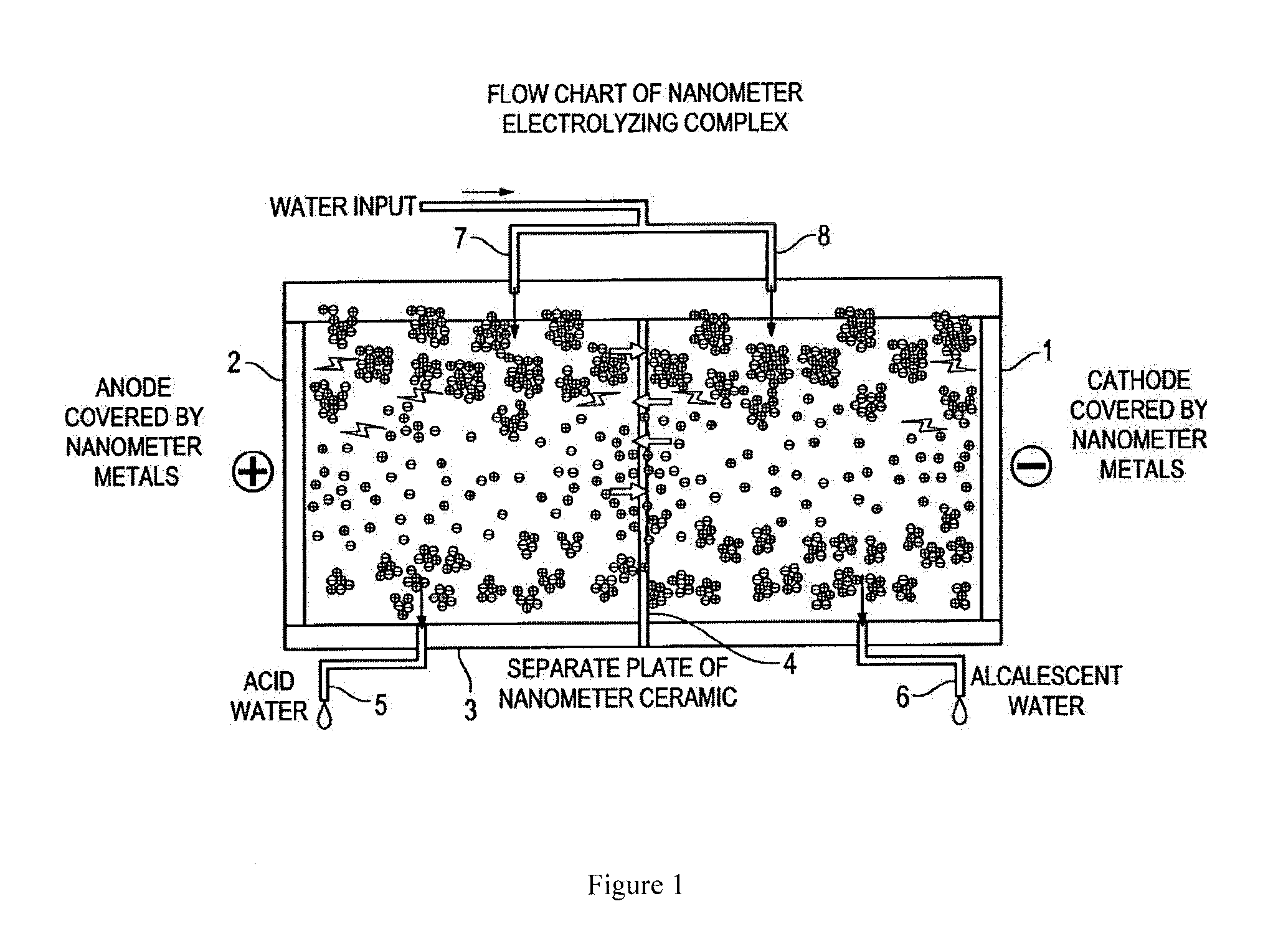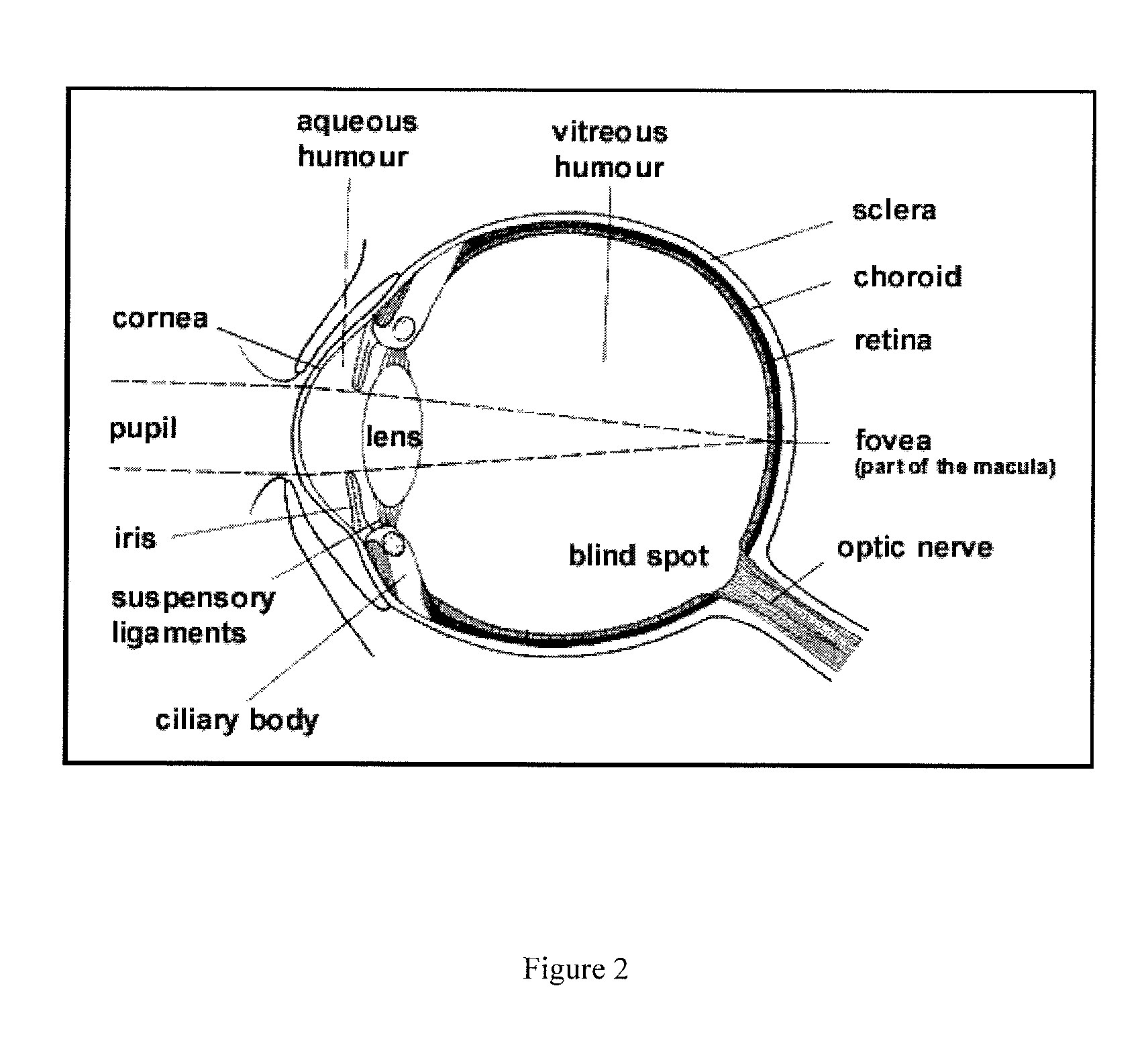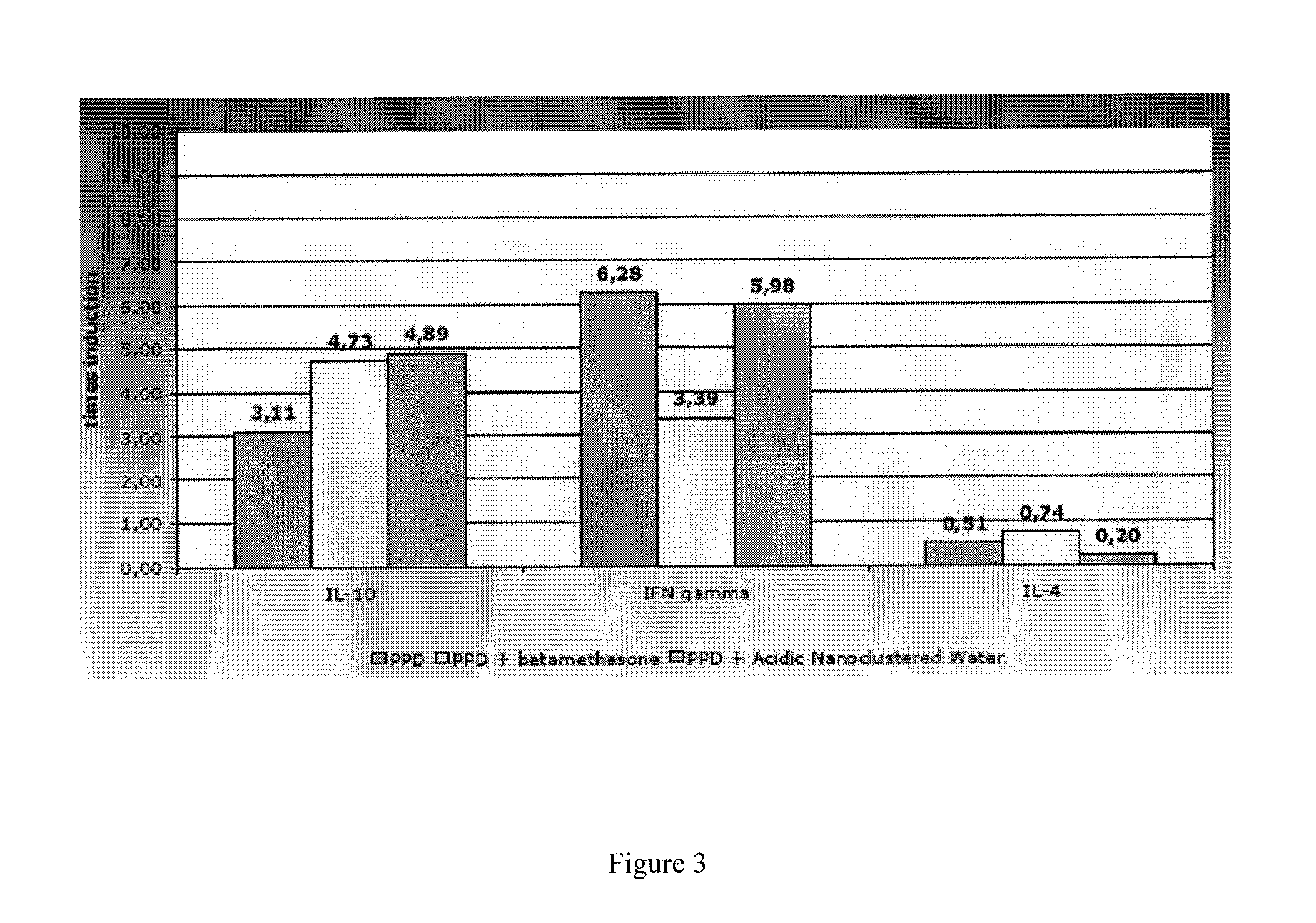Medical uses of nanoclustered water
a technology of nano-clustered water and nano-clustered water, which is applied in the direction of antibacterial agents, drug compositions, antiparasitic agents, etc., can solve the problems of difficult treatment of chronic sinusitis difficult treatment of conventional electrolytic waters with conventional decongestants and antibiotics, and the acknowledged drawback of very limited preservation of conventional electrolytic waters, etc., to achieve the effect of reducing side effects, reducing oxidation potential
- Summary
- Abstract
- Description
- Claims
- Application Information
AI Technical Summary
Benefits of technology
Problems solved by technology
Method used
Image
Examples
example 1
[0090]Objective
[0091]Determine the efficacy of acidic nanoclustered water (ANW) against several strains of bacteria, viruses and fungi.
[0092]Bacterial Activity
[0093]Bacterial activity was assessed with the method of UNI (Italian Organization for Standardization) EN 1040 (quantitative suspension test for the evaluation of basic bactericidal activity of chemical disinfectants and antiseptics). According to this method, a substance is classified as bactericidal for a specific microorganism if it reduces the bacterial count by at least 5-log10 following 5 minutes of contact at 20° C. ANW solutions at three different concentrations (80%, 50%, and 25%) were tested against two strains of bacteria known to cause eye infections, Staphylococcus aureus (ATCC 6538) and Pseudomonas aeruginosa (ATCC 15442). Table 3 below shows the antibacterial effect of the three different concentrations of ANW, with viability reduction values expressed as the log10 reduction.
TABLE 3Antibacterial Effect of ANWVi...
example 2
[0109]Objective
[0110]Determine the efficacy of acidic nanoclustered water (ANW) at promoting corneal healing, skin wound healing and cataract healing.
[0111]Corneal Ulceration Healing
[0112]Corneal healing activity was assessed in an in vivo rabbit model. Corneal eye wounds were experimentally provoked in 8 rabbits. The left and right eyes were then treated with ANW and saline, respectively, by applying 100 μl of the solutions 4 times per day for 14 consecutive days. On the 4th, 9th, and 14th day after the surgery, images of each wound were taken under a slit lamp microscope and the area of each wound was calculated with the software Topcon IMAGENET 2000. The wound area was then used to calculate the wound healing rate (WHR) using the following equation:
WHR=100(1−(wound area at timing point) / (initial wound area))
[0113]Table 9 below shows the Wound Healing Rate of ANW and saline treated eyes at 4, 9, and 14 days.
TABLE 9Corneal Ulceration Healing Effect of ANW and SalineWound Healing Ra...
example 3
[0129]Objective
[0130]Determine the safety of acidic nanoclustered water (ANW) in systemic and topical applications.
[0131]In Vitro Studies
[0132]Citotoxicity was assessed with the method of ISO (International Organization for Standardization) 10993-5. According to this method, a substance is classified based on its effect on a cell culture. 100 μl of pure ANW was applied to a cell culture of murine fibroblasts L-929 and the cells were evaluated after 24 hours of incubation at 37° C. Some malformed cells were observed after the period of incubation. Based on these results, ANW was defined as “slightly cytotoxic” (grade 1 of 4).
[0133]Mutagenicity was assessed with the method of OECD 471. According to this method, a substance is classified based on its ability to induce point mutations in bacteria. Five mutant strains of Salmonella typhimurium (TA 1535, TA 1537, TA 98, TA 100, and TA 102) were studied both in the presence and in the absence of ANW. Based on the results of a reverse mutat...
PUM
 Login to View More
Login to View More Abstract
Description
Claims
Application Information
 Login to View More
Login to View More - R&D
- Intellectual Property
- Life Sciences
- Materials
- Tech Scout
- Unparalleled Data Quality
- Higher Quality Content
- 60% Fewer Hallucinations
Browse by: Latest US Patents, China's latest patents, Technical Efficacy Thesaurus, Application Domain, Technology Topic, Popular Technical Reports.
© 2025 PatSnap. All rights reserved.Legal|Privacy policy|Modern Slavery Act Transparency Statement|Sitemap|About US| Contact US: help@patsnap.com



